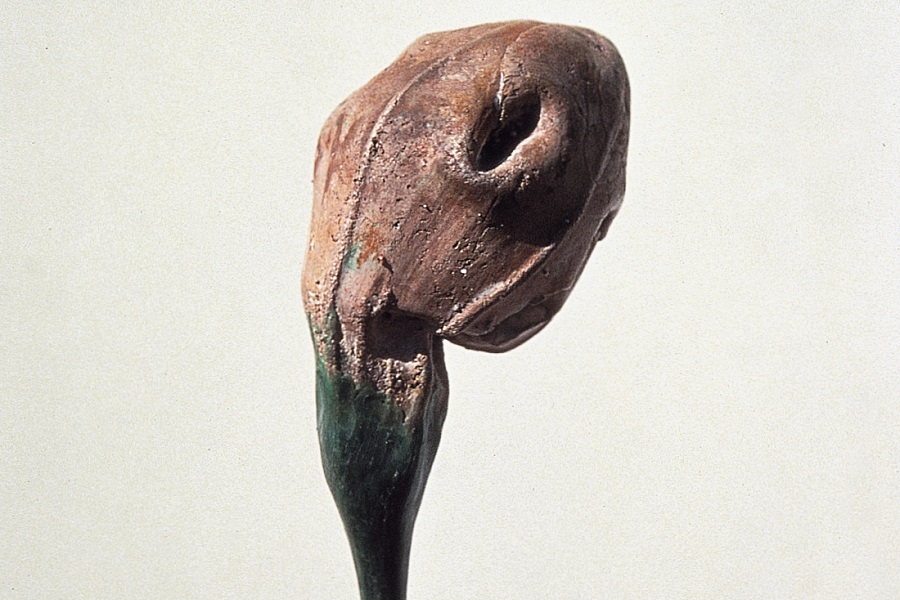Elson captures metal as a living thing, both fluid and gently resistant, capable of spreading to the papery thinness of petals, or compacting into the woody husks of stems and shells.
Sarah Elson
Born 1971, Tanunda, South Australia
An investigation of the regime of value and the nature of the precious is at the heart of Sarah Elson's practice. Working largely with non–precious metals, Elson makes painstakingly delicate repousse castings of small plant and animal forms – beetles, crickets, seed pods, flower bulbs, roots, fibres and tangled stems. Creating what she calls a 'language of abundance', her forms are riotously organic in their morphology, suggesting all the messy randomness of growth. Silver Magnolia, for instance, is a transitional form frozen in time, grotesquely swollen with its enfolded potential. In the texture of its skin, its tracery of veins and its coarse powdery surface, Elson captures metal as a living thing, both fluid and gently resistant, capable of spreading to the papery thinness of petals, or compacting into the woody husks of stems and shells.
An important element of Elson's practice is the way she chooses to exhibit her works. Resisting the conventional presentation of jewellery on plinths, Elson's sculptures are mounted on pins studded directly into the wall, projecting precariously into the gallery space. From a distance they are almost imperceptible, a scattering of tiny seeds. In order to 'see' the works at all it is necessary to come up close, to be drawn into the intimacy of their scale. What is revealed is a kind of botanical cornucopia of casually overlooked living things. Like beachcombing, it is a celebration of the valueless preciousness of the 'found'.
Russell Smith from his Samstag catalogue essay, Making The Makers
2002 Anne & Gordon Samstag International Visual Arts Scholarship
2002 MFA, Chelsea College of Art & Design, London, UK
1999 Bachelor of Fine Art (Honours), Curtin University of Technology, Perth
1991 Bachelor of Arts (Visual Art), Curtin University of Technology, Perth

